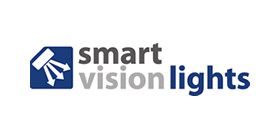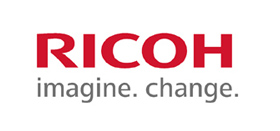Listen to this Article
Introduction
When it comes to setting up a security system, it's crucial to pay attention to the design and specification requirements before jumping into the installation process. Specifically, one must consider the imaging device and power requirements to ensure that all components work together seamlessly. In this comprehensive guide, we will delve into three key factors to maximize the efficiency of your security camera system: CCD/CMOS sensor size, lens format/type, and proper power supply. By understanding the importance of hardware compatibility, especially as it relates to high-resolution cameras, you'll be better equipped to make informed decisions and achieve optimal resolution quality.
Understanding Camera Sensor Size
The first essential consideration in building a high-resolution security camera system is the sensor size. Whether you're opting for a digital or analog platform and deciding between color, black and white, or day/night cameras, the size of the CCD (Charge-Coupled Device) or CMOS (Complementary Metal-Oxide-Semiconductor) sensor plays a pivotal role.
The most common sensor sizes in security cameras are as follows:
- 1/2"
- 1/2.8"
- 1/2.7"
- 1/3"
- 1/4"
Matching the lens format size to the camera sensor is paramount for optimal performance. For instance, a 1/2" formatted sensor should be paired with a 1/2" formatted lens, and likewise for other sizes. While it's possible to use a larger formatted lens with a smaller sensor, it can lead to changes in the angle of view (AOV) and field of view (FOV). To avoid loss of image quality, avoid pairing a 1/3" formatted lens with a 1/2" formatted sensor, as it can result in vignetting, where the edges of the image appear dark or distorted.
Understanding Lens Mount Options
The next critical factor to consider is the lens mount, which ensures that the lens is securely attached to the camera body. There are three main lens mount options in the security camera industry:
- CS Mount: Most standard CCD/CMOS cameras are either C or CS mount style. Your camera will specify the required lens type. The good news is that a CS mount style camera can often be adapted to accept both C or CS mount style lenses, providing flexibility in lens selection.
- C-Mount: Cameras with a C-mount format must use C-mount formatted lenses exclusively.
- S-Mount: S-mount lenses typically have an M12 threading with a 0.5mm pitch, making them common in board-level cameras.
Exploring Iris Types
Another important consideration is the type of iris in the lens, which controls the amount of light entering the camera. There are three primary iris types:
- DC Auto Iris Lenses: This is the most common and affordable iris type. It adjusts the iris leafs automatically to accommodate changes in lighting conditions. When using a DC auto iris lens, it's important to disable any shutter setting preferences on the camera to ensure maximum efficiency. These lenses operate using a DC signal.
- Video Auto Iris Lenses: While less common nowadays, video auto iris lenses provide high-quality video image reproduction. They, too, adjust the iris automatically based on lighting changes, and you should disable shutter settings on the camera when using them. Video auto iris lenses operate using the video signal.
- Manual Iris Lenses: Manual iris lenses can be used with C or CS mount cameras and do not require a plugin to the camera. You manually adjust the iris leafs to compensate for varying lighting conditions.
Selecting the Right Power Supply
To power your high-resolution camera, you'll need to consider the voltage and current requirements, which are often determined by the camera and the specific application. Here are the typical power voltage options:
- AC (Alternating Current): The most common AC voltage for security cameras is 24VAC.
- DC (Direct Current): DC voltage options include 6VDC, 9VDC, and 12VDC. Some cameras may accept a voltage range from 5-16 volts, but always check the camera's specifications when selecting your power supply.
It's important to note that voltage drops over distance, so you must know the distance from the power supply to the camera. Additionally, ensure that the voltage supplied matches the camera maker's specifications and consider the power draw, measured in milliamps (mA) or amps, to avoid issues related to insufficient power.
Investing in Quality Optics
In conclusion, when investing in a high-resolution camera, it's equally important to invest in quality optics. Many customers focus extensively on camera quality but compromise on lens quality, leading to subpar image results. To ensure the best image quality, choose lenses that match the capabilities of your camera, especially for 2 or 3-megapixel cameras.
Finally, always consult with the camera manufacturer regarding warranty requirements for power supplies. Using approved power units that are qualified for use with their products is crucial to avoid warranty issues.
By considering these factors and ensuring compatibility between your camera's sensor, lens, and power supply, you'll be well on your way to building a high-resolution security camera system that delivers exceptional performance and image quality. Remember that a well-thought-out system design is the foundation for effective security surveillance.
ALSO READ: UNLOCKING BUSINESS POTENTIAL: THE 9 APPLICATIONS OF PLUG-AND-PLAY LENSES
Back to All Robotics and Autonomous Systems Articles, Resources and News
































